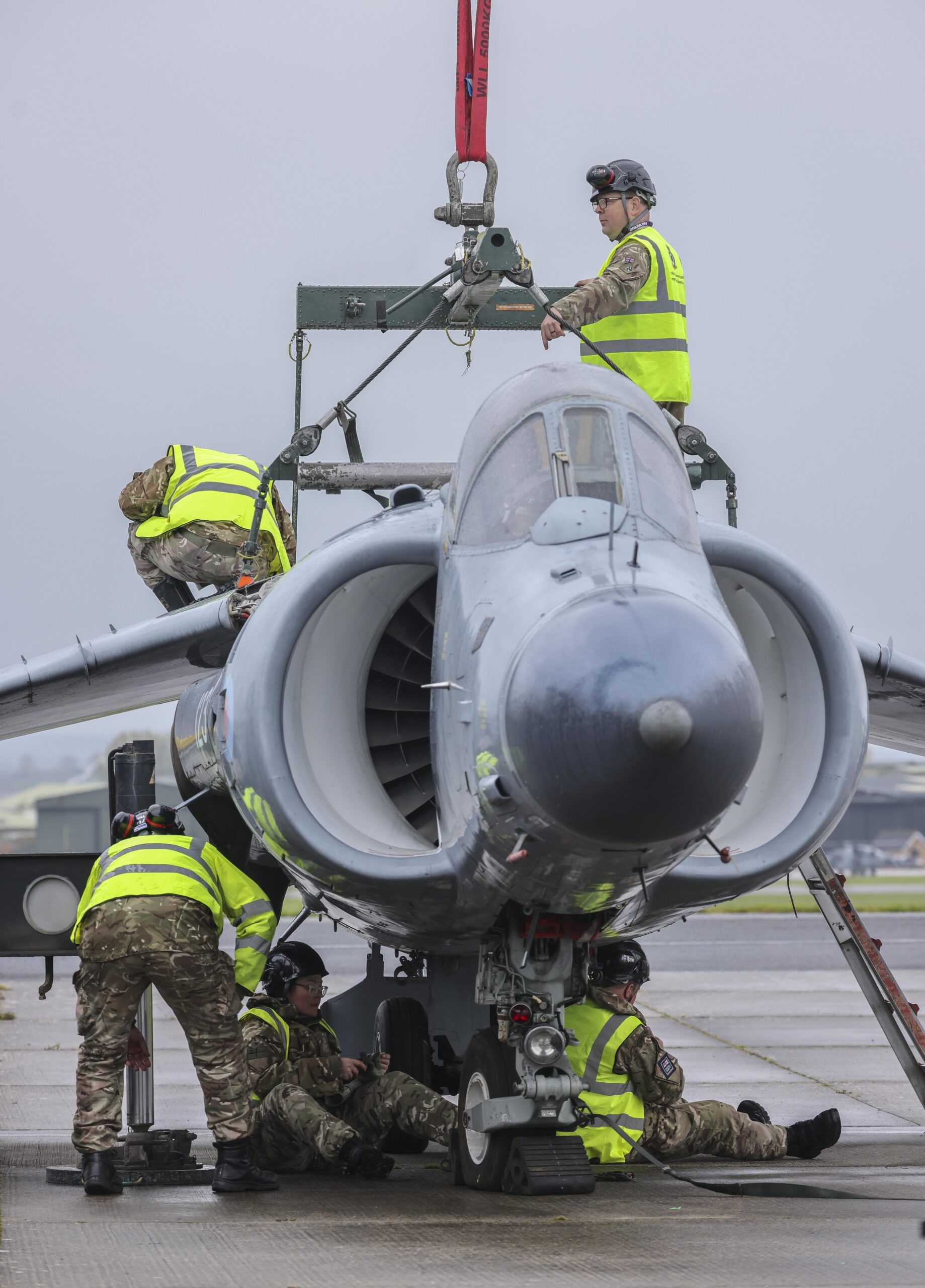Two iconic Royal Navy aircraft are on an 8,000-mile journey to become centrepieces of a new museum in the Falklands.
A retired Sea Harrier jump jet and Lynx helicopter are being transferred to the South Atlantic as islanders create an exhibition dedicated to the men and women who liberated the Falklands from Argentine rule in 1982.
The museum in the capital Stanley has an existing gallery recounting the story of the conflict, but it’s expanding it and adding a new hall for larger exhibits – including the two veteran aircraft.
Neither are able to fly to the Falklands, or be transported by air. By sea is the only option.
So the military’s experts in such delicate moves – the Joint Aircraft Recovery and Transportation Squadron (JARTS), a combined RN-RAF unit at Boscombe Down in Wiltshire – were called in by RNAS Yeovilton in Somerset to disassemble the Harrier and transport the special load up the A303 back to their home.
Overseeing the move for JARTS is Chief Petty Officer Stewart Wright – a former Harrier engineer who maintained the aircraft at sea and on land, including tours of duty in Afghanistan.
“I began my carrier on Harriers so the aircraft means a lot to me and I’m just glad to be able to deliver this one back to the Falklands where it means so much to them,” he said.
“We went to the Falklands to prepare the move and it’s evident how passionate the islanders are and how much the Sea Harrier means to them – it’s a symbol of their freedom, so they are really keen to have one on display.”
Watching CPO Wright’s team prepare the Harrier for moving by low-loader (the whole process took nearly 12 hours and ended after nightfall) was former jump jet pilot Lieutenant Commander Jason Flintham, who as commander of 727 Naval Air Squadron today assesses whether trainees possess what is needed to make it as aviators with the Royal Navy.
“It’s amazing – and right – that there should be a Harrier in the Falklands. It will serve as a testament to those who flew it and a memorial to those who did not return,” he said.
“The Harrier is of huge historical importance to the islands and I’m proud that this one is going down there for all to see.”
The final Sea Harriers were retired by the Royal Navy in 2006 after more than a quarter of a century’s service.
Of the two aircraft selected for the museum, only the Lynx saw service in the 1982 campaign; the Sea Harrier, ZH801, was delivered to the Fleet Air Arm after the war and served until 2004 since when it’s acted as a ‘hangar guardian’ on display at RAF Cottesmore (the Navy’s Harrier force moved there when it merged with the Air Force) and more recently back at Yeovilton.
Before being shipped, the Harrier was given a thorough makeover; Chris Hodson, an engineer who built the very same aircraft at BAE’s Dunsfold works in Surrey made the trip to Somerset to fit the pilot’s ejector seat.
And the Fly Harrier Trust and Horizon Aircraft Services from St Athan provided a slew of parts and sections – weapons pylons, fuel tanks, panel sections – which had gone missing during the ZH801’s two decades of inactivity.
Lynx XZ725 saw action in the Falklands – and served with distinction until the end of her active life.
Operating from frigate HMS Brilliant, she attacked and crippled the Argentine submarine Santa Fe in South Georgia during the opening moves of Britain’s efforts to liberate its South Atlantic territories.
The helicopter was constantly upgraded and overhauled, evolving into a Lynx Mk8 which last flew from the deck of frigate HMS Iron Duke before being transferred to HMS Sultan in Gosport to serve as a training aid for air engineers.
From Boscombe Down both aircraft were moved by JARTS to Marchwood Military Port in Southampton Water for loading on to a Falklands-bound supply ship which sails next week.
They are due to arrive in the Falklands in time for liberation day events in June and will be kept in storage while the new exhibition hall is completed. Its due to open to the public in the spring of 2025.
Despite a population on the islands of under 3,000 – and most of those are centred in the capital – the Falklands’ museum attracts 80,000 visitors a year, expected to rise to around 100,000 thanks to growing trade from cruise liners.




